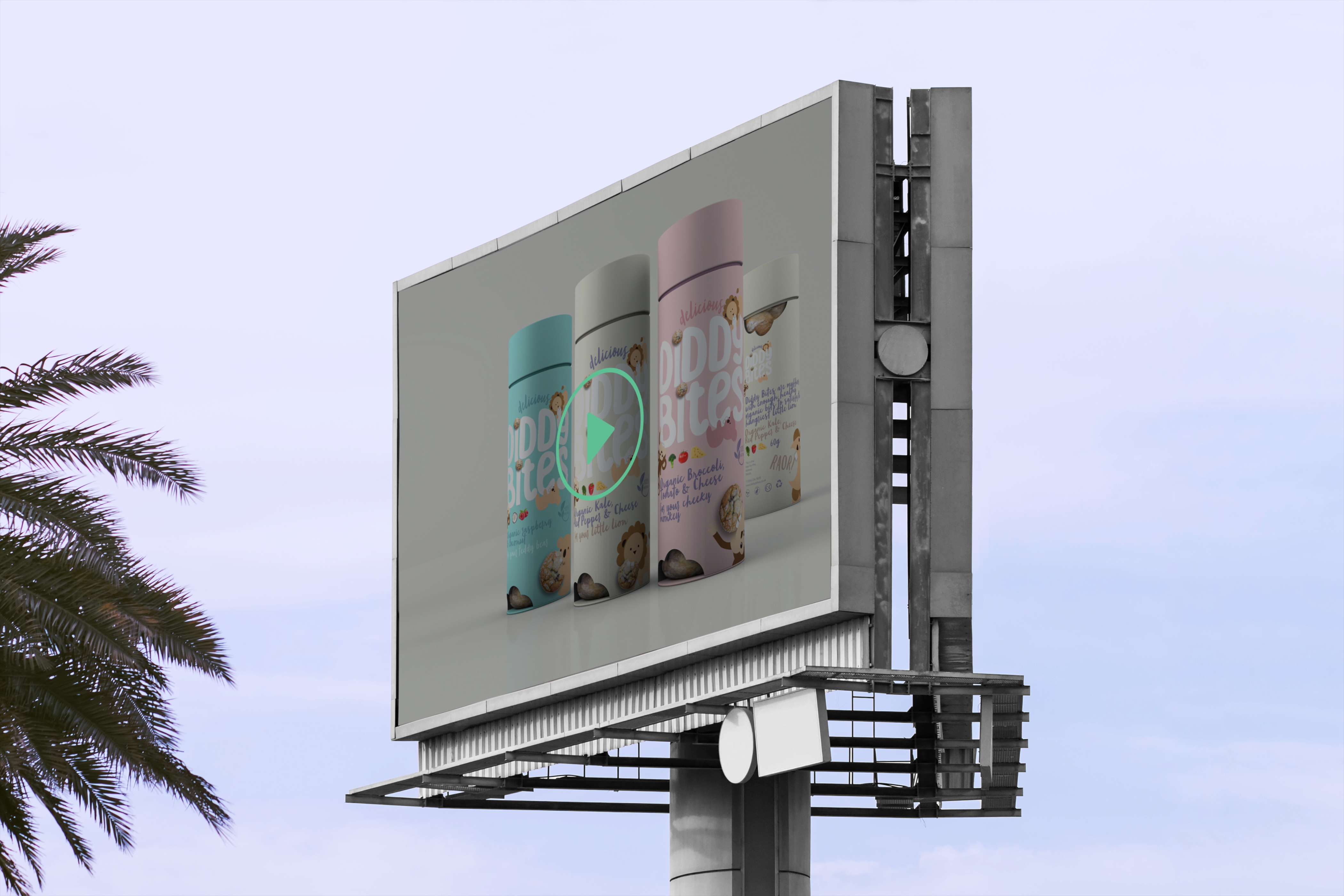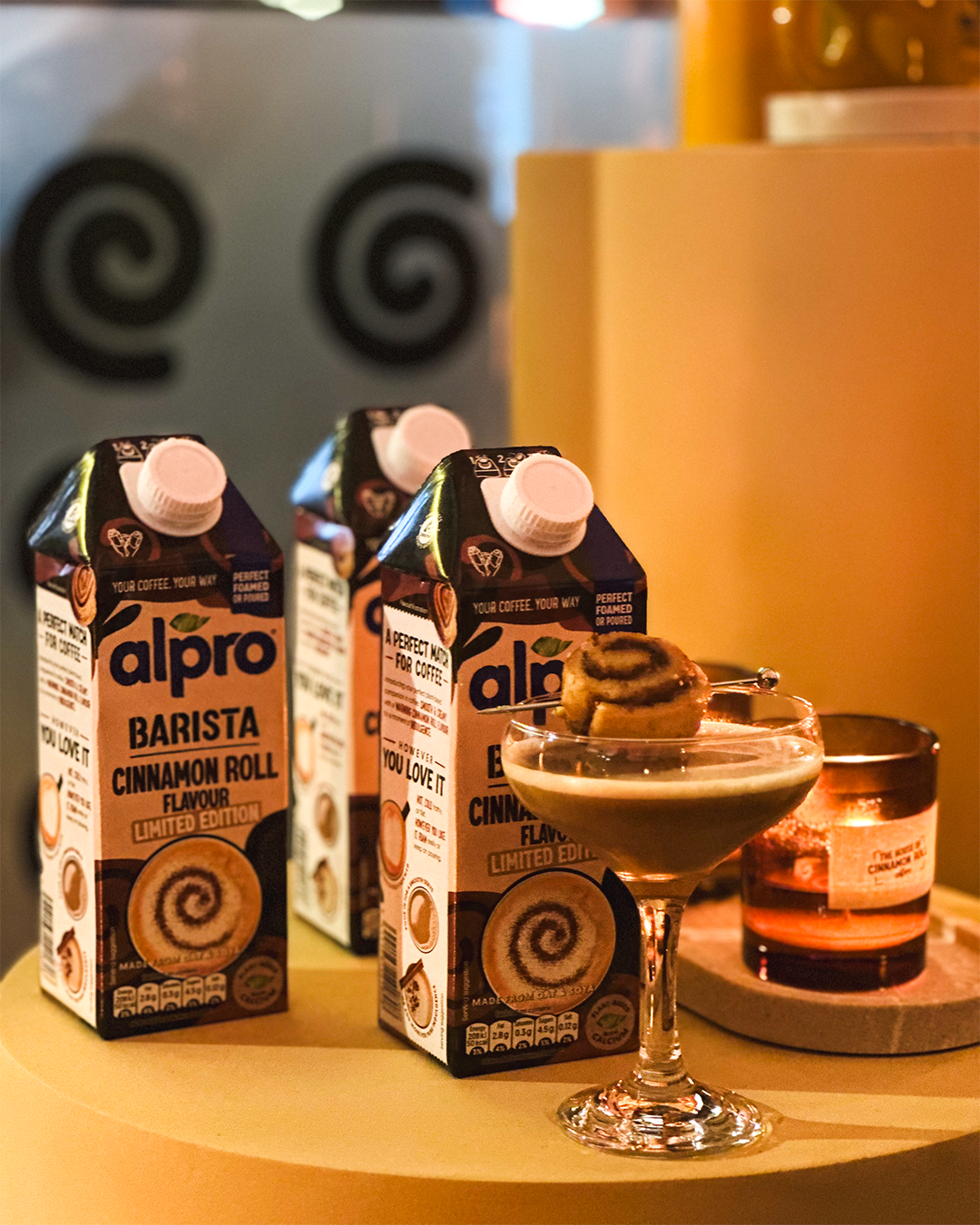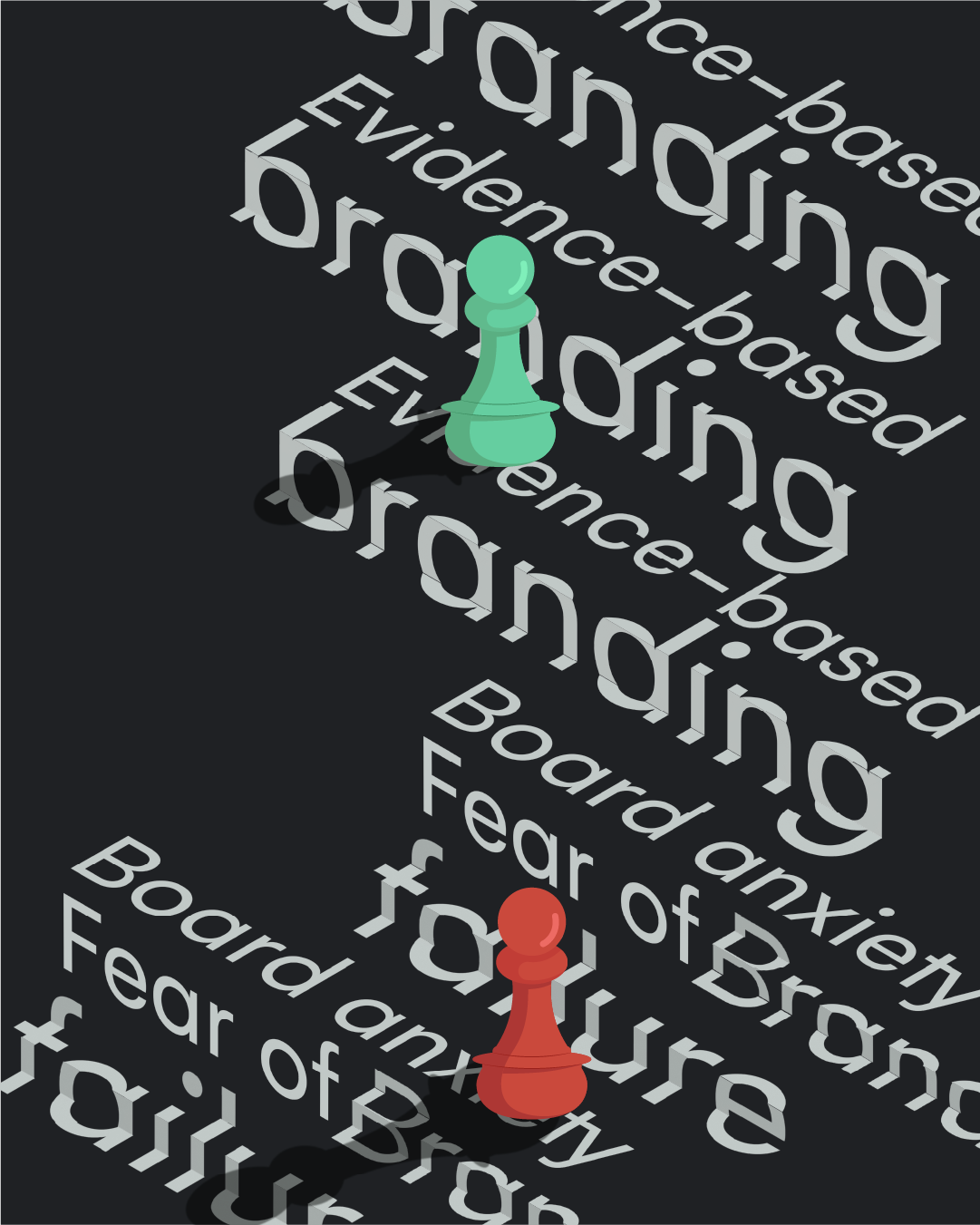Brand story: The art of storytelling and aligning with purpose
In today's highly competitive market, where countless brands vie for attention, the art of cutting through the noise becomes essential. In a landscape where consumers are bombarded with messages, only a few brands manage to rise above the clutter. And while many think that cutting through the noise is about pricing, differentiation, loudness, or even creating a direct connection, there is something deeper and more powerful—brand storytelling.
Brand storytelling is often an overlooked element of branding. Yet, it’s crucial for creating meaningful, lasting relationships with customers. It is not just about showcasing a product but about weaving a narrative that resonates with your audience on an emotional level. Crafting a compelling brand narrative helps humanise your brand and align it with the values and aspirations of your target audience.
Of course, this may sound simple in theory, but in practice, it is much more complex. Finding a story that is both honest, clear, aligned with your branding strategy, and compelling for the audience can be challenging. In some cases, it may not even seem possible. However, with the right approach, brand storytelling becomes an invaluable tool that not only differentiates you but also builds a long-lasting relationship with your audience.
What is a brand story?
A brand story is the cohesive narrative that explains the facts and feelings associated with your brand. It defines why your company exists, who it serves, and the positive change it aims to bring to its customers. This narrative provides a human-centric identity that makes a brand memorable, relatable, and distinct from its competitors.
The most effective brand stories position the customer as the hero of the narrative, with the brand acting as a trusted guide on their journey. This approach gives context and meaning to all business activities, from product design to customer service.
Let’s take an example from a rebranding project we did for Electrical Safety First (ESF). This charity exists to protect people from the growing risks associated with electricity in our increasingly tech-dependent world. During the branding process, we dived deep into ESF's mission, spending time with the team and understanding their passion, from the CEO's commitment to public safety to the entire staff's dedication to reducing electrical accidents across the UK.
What emerged was a brand narrative driven by the very human, urgent need to save lives. Through branding elements like tone of voice, colour, and simple iconography, we communicated ESF’s mission in a clear, compelling, and relatable way.

So, where does storytelling come into play? It doesn't always begin with a typical "once upon a time" approach. In ESF’s case, storytelling became a vital tool in illustrating real-life scenarios. The risks of electricity were brought to life through visuals—simple, memorable icons overlayed onto bright monotone images that demonstrated the danger in everyday situations. Imagine a child playing with a phone or tablet while it's charging, a seemingly innocuous situation that actually carries significant risk. We communicated how buying a cheap, unregulated charger from a non-certified retailer, for instance, could put lives at risk, but by bringing in an extremely simple iconographic style, using bright colours that lead the viewer in thinking they are viewing a fun and friendly situation, the stark reality hits them when they understand the seriousness of the situation.
For branding like this, brand storytelling is a must. It maps out various complex dangers and presents them in a way that's clear, memorable, and ultimately life-saving. That’s the essence of storytelling aligned with purpose, where the brand’s mission is seamlessly integrated into every customer touchpoint – powering change + saving lives.
How does a brand story differ from brand messaging and a mission statement?
While often used interchangeably, a brand story, brand messaging, and a mission statement have distinct roles in building a brand identity.
- Brand story: This is the overarching, emotional narrative that explains the company's purpose or its "why". It forms the soul of the brand.
- Brand messaging: These are the specific phrases, taglines, and copy used to communicate the brand story. It is the brand's voice.
- Mission statement: This is a formal declaration of the company's goals and how it plans to achieve them. It is the brand's strategic map.
The table below illustrates the differences using Patagonia as an example.
The many forms of brand storytelling
Brand storytelling isn’t confined to one format. In fact, it can be as diverse and creative as your imagination allows. A good example is the branding project we did for a range of gins, where the narrative was inspired by the Saxons’ sailing skills and their adventurous spirit. The branding for the gin didn’t just stop at visual identity; it wove a tale of history, letting the product’s taste and aroma transport the drinker into the story. Through brand storytelling, we created an immersive experience that connected the consumer with the brand on a much deeper level.
Similarly, our work with TET (True English Teas) is another example of how branding and storytelling go hand in hand. For TET, the design and copy were carefully crafted to evoke a sense of rolling English hills and traditional countryside charm. The storytelling element here allowed customers to associate the brand with an authentic, historical experience, making each cup of tea feel like a journey into English heritage.
The most powerful brand stories are not written in a boardroom; they are excavated from the truth of the company and the needs of its customers.

The essential elements of a brand story
Every memorable brand story grows from carefully nurtured elements, each playing its vital role in creating a narrative that flourishes and bears fruit. Here are the fundamental elements that bring your brand story to life:
Soul & purpose
Plant your story in truth and purpose. Your narrative should reflect your brand's deepest values and aspirations, creating genuine connections that root themselves in your audience's hearts.
Human connection
Like a garden needs sunlight, your story needs human warmth. Weave experiences and emotions that mirror your audience's journey, showing that you understand their challenges and dreams.
Distinctive voice
Just as every flower has its unique fragrance, your brand voice should be instantly recognisable. Cultivate a tone that stands out in the crowded marketplace while remaining true to your identity.
Crystal clear simplicity
Strip away the complex undergrowth of industry jargon. Your story should flow naturally, using language that welcomes rather than alienates your audience.
Narrative thread
Like a well-tended path through a garden, your story should guide audiences on a clear journey. Each touchpoint should feel connected, creating a cohesive experience across all channels.
Strategic alignment
Ensure your story grows in harmony with your business objectives. Every narrative element should contribute to your brand's growth, from customer engagement to market positioning.
Call to adventure
Your story should inspire action, inviting audiences to step into their own journey with your brand. Create natural moments that transform listeners into active participants in your brand's ongoing narrative.
Why is a brand story a valuable business asset?
A well-defined brand story is a strategic tool that can deliver tangible business results. It is a long-term asset that contributes to growth and stability.
Creates an emotional connection
A brand story gives customers something to believe in, which fosters an emotional connection and drives loyalty. Emotionally connected customers typically have a higher lifetime value and are more likely to become brand advocates.
Justifies a price premium
A strong narrative can elevate a brand from a commodity to a distinct choice in the market. When customers connect with a brand's purpose and values, they are often willing to pay more for its products or services.
Provides internal alignment
A clear brand story acts as an internal compass for the entire organisation. It aligns teams-from marketing to product development-around a shared purpose. This alignment ensures a consistent brand experience and helps attract and retain employees who share the company's values.
Simplifies marketing efforts
A core narrative provides a foundation for all marketing and content creation. Every piece of content-from blog posts to advertising campaigns-can become a chapter in the larger brand story, making marketing activities more focused, consistent, and efficient.
How to create your brand story: a three-step framework
The most effective brand stories are not invented but discovered from the truths that already exist within a company. This framework helps uncover that authentic narrative.
Step 1: Internal discovery
Begin by looking inward to find the core truths of the company.
- Conduct founder and stakeholder interviews: Ask questions about the company's origin, purpose, and proudest moments. For example: "What problem did you originally set out to solve?" or "What injustice are you trying to fix?"
- Review company history: Examine early business plans, pitch decks, and internal documents to rediscover the original passion and vision that launched the company.
Step 2: Audience research
To develop the protagonist of your story, you must understand your audience beyond basic demographics.
- Conduct customer interviews and surveys: Ask customers about their challenges and goals. Focus on understanding their situation "before" and "after" they engaged with your brand to gather insights into the transformation you provide.
Step 3: Structure the narrative
Use the insights from your discovery and research to structure the story using the five essential elements. A simple story arc can be a useful guide:
- The setup: Describe your customer's world and the challenges they face.
- The inciting incident: Introduce the specific problem they encounter.
- The rising action: Detail their struggle to solve the problem on their own.
- The climax: Your brand appears as the mentor with a plan or tool to help.
- The resolution: The customer's life is transformed for the better.
Examples of effective brand stories
Analysing how successful brands use this framework can help make the concept more tangible.
Patagonia
- Purpose: To save our home planet.
- Protagonist: The conscious consumer who loves the outdoors and worries about their environmental impact.
- Conflict: The threat of environmental destruction, driven by overconsumption.
- Resolution: Patagonia acts as a mentor, empowering customers to become activists through their purchases and actions.
Warby Parker
- Purpose: To offer designer eyewear at a revolutionary price while also doing good.
- Protagonist: The stylish consumer frustrated by the high cost of prescription glasses.
- Conflict: The eyewear industry keeps prices artificially high, making vision care inaccessible.
- Resolution: Warby Parker provides affordable, fashionable eyewear and allows customers to help others through its "Buy a Pair, Give a Pair" programme.
Slack
- Purpose: To make working life simpler, more pleasant, and more productive.
- Protagonist: The overwhelmed team member struggling with inefficient email chains and meetings.
- Conflict: Chaotic and siloed internal communication kills productivity and team morale.
- Resolution: Slack provides a central platform that improves collaboration and transforms how teams work together.
How to integrate a brand story into your business
A brand story must be consistently expressed at every customer touchpoint to be effective.
Your website
The "About Us" page is a natural home for your brand story, but the narrative should extend across the entire site. Use it to inform homepage headlines, product descriptions, and even the tone of error messages.
Your content marketing
Treat blog posts, videos, case studies, and social media updates as chapters in your ongoing brand narrative. Share customer success stories that reinforce your core message and demonstrate your value in a relatable way.
Your people and teams
Your employees are your most important storytellers. Equip your sales, customer support, and success teams with the core narrative. When they understand and believe in the story, they can share it authentically in every customer interaction, building trust and connection.
Why storytelling is integral to branding
You see, a brand needs many things to thrive: it needs to attract attention, inspire loyalty, foster connection, and convert potential customers into long-term advocates. Storytelling is essential in achieving all of these goals. When a brand has a story to tell, that story should be told in every aspect of the branding process - from visual identity to marketing campaigns to customer service interactions.
Modern consumers don't just buy products - they invest in stories that reflect their own values and aspirations, making storytelling a crucial tool for building brand equity and market value. Just as a garden needs consistent care to flourish, your brand story must be carefully cultivated across all touchpoints, from social media to packaging, creating an ecosystem where every element reinforces your narrative. This investment in storytelling pays dividends beyond marketing - it builds resilience during market challenges and creates a foundation for sustainable growth through genuine customer advocacy.
Effective brand storytelling humanises your brand, makes it more relatable, and helps you form emotional connections with your audience. It’s no longer just about the features of your product or service; it’s about the experience, the emotions, and the values your brand represents. Through storytelling, you can differentiate yourself in an increasingly saturated market, where consumers are more likely to choose a brand that aligns with their own values and beliefs.
When executed correctly, branding that integrates storytelling can transform your brand into something more than just a logo or a product - it can become a narrative that resonates, inspires, and endures. And in a world full of noise, a brand with a strong, authentic story is the one that stands out.
Ready to uncover the powerful story at the heart of your brand? Our branding experts specialise in helping companies like yours craft narratives that captivate audiences and drive growth. Let us talk.

















.jpg)





































































